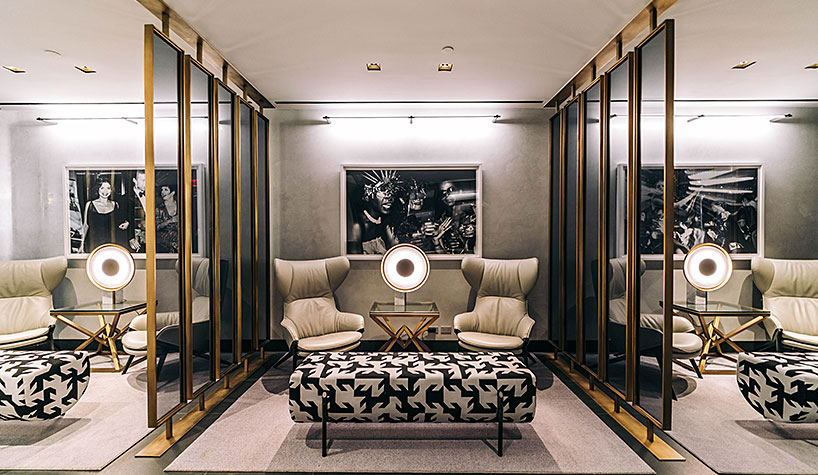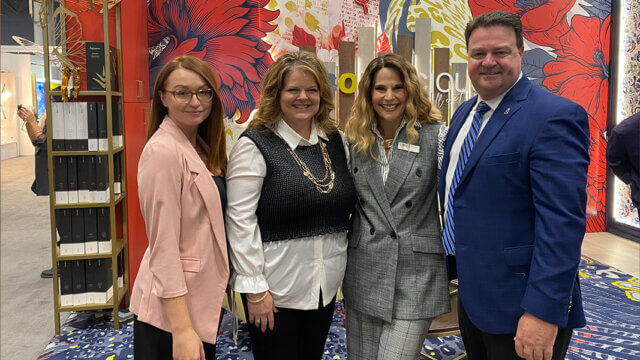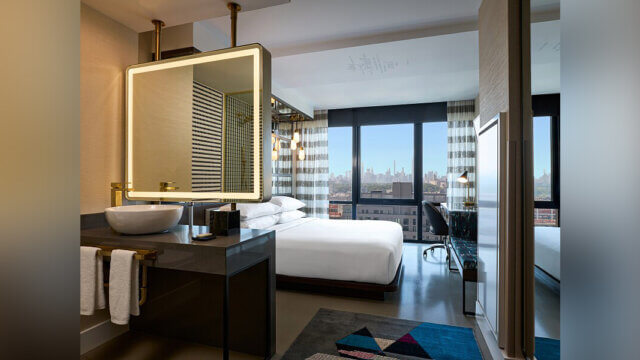NEW YORK—For many people, art is simply used as way to decorate a space. Michael Buono, principal/CEO of full-service real estate development and construction management firms New York Renaissance Group and Mulberry Development LLC, sees it as the defining DNA of a space.

“Art can fortify the consumer’s experience and create a lasting impression without a significant investment,” he said. “Based on my experience, art is probably the most underrated critical piece. I’ve had the opportunity to see a lot of properties come to life and my opinion on the matter is they really come to life as you layer this art. It is really what brings it all together. You can have an amazing designer layer a room, but without the art components, it doesn’t infuse life.”
He has been involved with many projects, including NoMad New York, Ace Hotel and Michelin Star Breslin Bar & Dining Room, AKA Tribeca and Central Park, The Freehand Hotel, The Plaza Hotel and Residences, and Sound View Hotel. “In the projects I have been involved with, art has always been incredibly important,” he said.
Buono offered these tips on incorporating art into a hospitality project.
Let art do the talking. “Allow that element to tell a story,” he said. “It should speak to something associated with the project. We did a project where the artist, the photographer, literally became part of the neighborhood and photographed individuals who were part of that environment. We had an older gentleman who would walk his white poodle in the morning. Everyone knew him in the area, and he became an image that was part of our program. What was special about that project was that we were telling a story that was transcending the space itself. It was really about the neighborhood that created an emotion.”
Embrace and connect with the local community. “It is not uncommon for us to reach out to one of the local schools and have their art folks come and be part of the project,” he said. “We have had students create direct-on-wall art. We had a bunch of students literally setting up shop in these rooms and doing some incredible pieces. What is really amazing about that approach is that it is still very authentic, and it is not forced. The one thing I have a hard time with is when you go to these massive resort-like properties and they have this very institutional feel to the art program. There are a lot of other elements. It is economies of scale versus being able to do the same thing but being atypical, nontraditional.”
Complement what is already there. “I have never done a ground-up. I have decided to buy, by way of life and how opportunities presented themselves,” he said. “I have always done rehabs on spaces that have been in existence—in some cases, 200 years. We’ve come up with ways to complement that space, so stained glass with a mosaic floor that has been around 150 years, coupled with a Michael Anderson and a graffiti sticker art piece that covered the entire back wall. It is like creating the soul.”
Think of the art as the glue. “It brings it all together. While each piece of art should make its own statement, think of what story the aggregate of the collection will relay to the consumer,” he said.
Be willing to take a calculated risk. “There is always an inherent risk with any of these pieces or with art,” he said. “Faena Hotel Miami Beach does it really well. You have this fish tank of a display case wrapped in gold and there is what looks like a wooly mammoth skeleton dipped in gold—it is amazing. It is a calculated risk, but in this situation, it created an exhibit that everyone who follows or is of this speed in Miami goes to visit. It is almost like a beacon. It can anchor a property.
“My belief is that art is—if it is executed properly and it is well thought out—the DNA that creates the space,” said Buono. “It has that memory that we can refer back to and that experience that is most important to us and what we are looking to do.”




